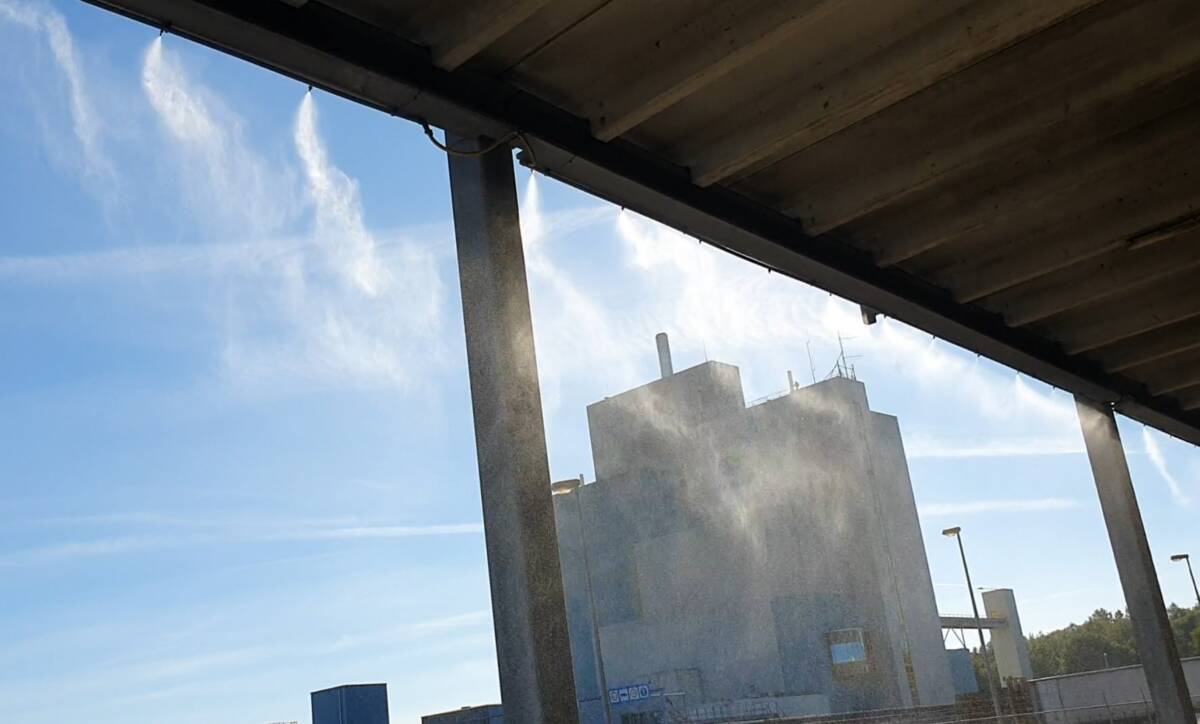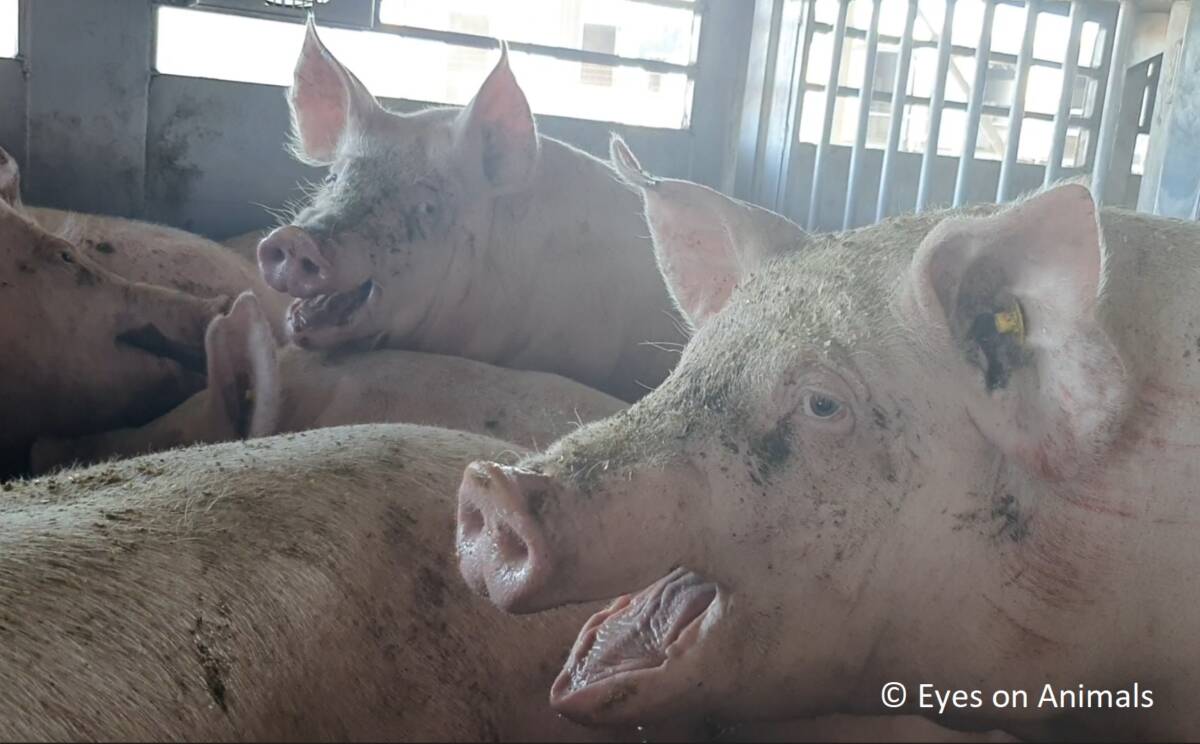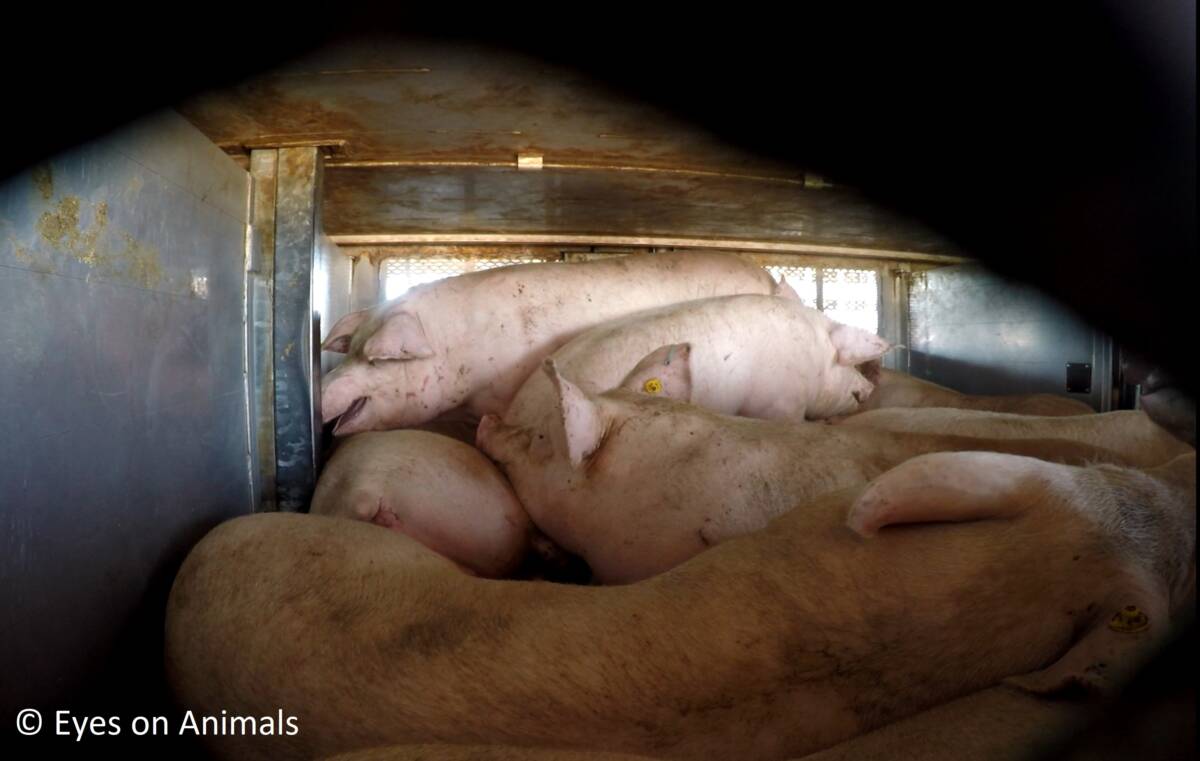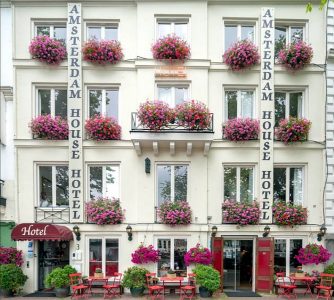Today, we conducted an unannounced visit to Van Rooi pig slaughterhouse. We chose a later time in the afternoon (starting at 17:00) because the temperature was expected to rise as the day progressed. At Van Rooi, pigs are delivered until late in the evening (around 20:00). It was 32-33°C in the sun during our visit.
At Van Rooi, drivers who need to wait before unloading their pigs can park their trucks under a parking garage where there is shade. Additionally, on our advice, misting systems have been installed here. Under the parking garage, it is about 3 degrees cooler than outside, which makes a significant difference for the pigs. There is natural ventilation under the parking garage, and due to the large and high space, there is often a substantial breeze. However, we noticed that on days like today (outside temperature >32°C), this is no longer sufficient. We advised Van Rooi to acquire large mobile fans, and they will work on implementing this for next year.

The waiting time at Van Rooi was considerably long today (> 1.5 hours). This was partly due to the fact that two trucks, in which the pigs experienced a lot of heat stress, were given priority to unload. It is important and positive that this happens, but at the same time, it means that other trucks have to wait longer. One of the two trucks that received priority had been stuck in traffic, and the pigs in this truck experienced a lot of heat stress. We informed Van Rooi that a driver who finds that their pigs are experiencing heat stress on a hot day while stuck in traffic can call the police. The police can then escort the truck past the traffic jam. We advised Van Rooi to make use of this and to avoid transporting pigs during hot weather when traffic jams are expected at certain times and locations.
Finally, we noticed that many pigs showed signs of heat stress upon arrival, such as rapid breathing with their mouths open (panting). On a day like today, it is simply not possible to prevent heat stress because the air circulating through the truck while it is in motion is also too warm. To prevent heat stress, we believe that transport should stop at temperatures > 25°C.

Furthermore, we still find the loading level of the heat protocol (10-20% fewer pigs) to be too high. Normally, 12-13 pigs are transported in one compartment, but today there were about 11 (according to the heat protocol). In our opinion, 10 pigs should be the maximum, so that pigs are not forced to lie against each other and can cool down better.

The degree of heat stress varied considerably from truck to truck. In all trucks, there was stress due to the heat, but sometimes it was mild, and sometimes it was severe. This will depend on factors such as the loading level, transport time, possible traffic jams, the equipment/design of the truck, the condition of the pigs, if social groups were mixed, the driving style of the chauffeur, and the handling of the pigs during loading. Temperatures in the trucks ranged from 30 to 36°C.
We would like to thank Van Rooi for giving us ample time to observe the pigs and take measurements. Van Rooi informed us that they would like to hear from us how they can better address hot days within their capabilities. We appreciate this positive attitude, and there will be a video-call soon about additional measures to address heat stress. We also want to thank the drivers at Van Rooi; all of them were so kind to speak with us and share with us their views and knowledge.

